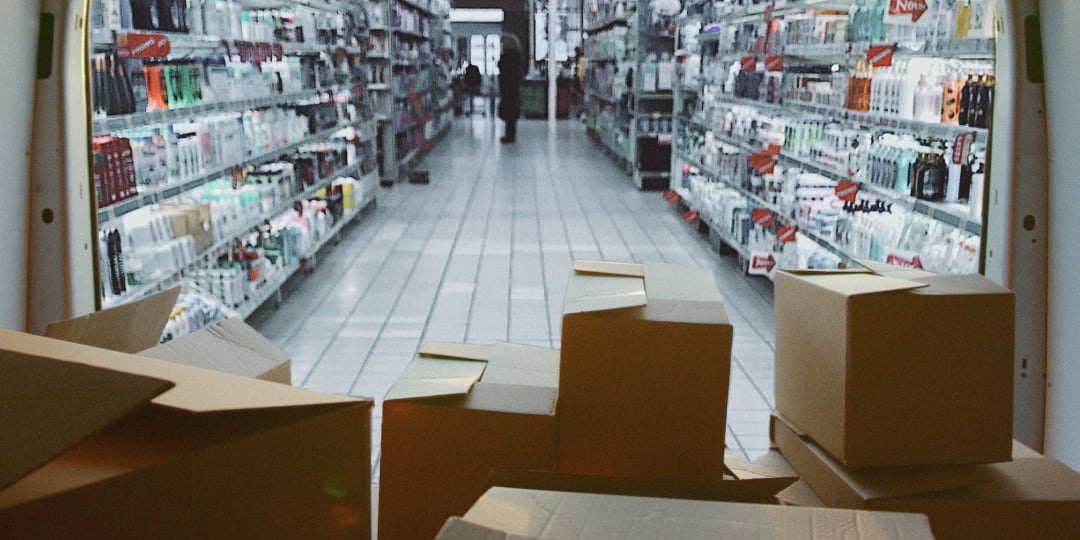What is Ship from Store? (Definition, Examples, and When to Use It)
If you’ve shopped online lately and ordered from a major retail store, you’ve probably received an order that was shipped from the store.
This is happening because brick and mortar storefronts built in the days before online shopping are still around, but ecommerce is quickly gaining popularity as the preferred shopping method.
We know how disruptive online shopping has become, because at Veryable, we work with plenty of eCommerce companies by enabling them to connect with on-demand labor through our marketplace.
The speed and customization demanded from online orders has created a necessity for everything to be faster and better. Labor constraints often get in the way of this, but we won’t get into that topic here.
In this article, you’ll learn what ship from store is, examples of its use, and how to know if it makes sense for you to implement it.
What does ship from store mean?

Ship from store is a fulfillment strategy where orders are filled from the store instead of the warehouse. This means shipments are made closer to the customer, so there is less lead time required and potentially less transportation cost associated when filling orders.
This strategy essentially increases the footprint of the company’s warehouse by using storefronts as mini distribution centers.
This is why companies like Amazon continue to build warehouses all over the world. They are optimizing for proximity to the customer so they can fulfill orders as quickly as possible and with the fewest shipping costs.
Examples of ship from store retailers
Many (if not most) major retailers use ship from store. They’ve been doing it for a while, but it’s getting more attention lately due to the pandemic-fueled spike in online orders and the prevalence of the option to pick up your order from the store.
Target in particular has gained trade media recognition for its approach to using ship from store. As of December 2020, it was estimated the brand’s stores were fulfilling between 75-90% of orders from stores. The company has unified its inventory across channels and continues optimizing its approach to replenishment. And the strategy paid off during 2020, as the pandemic made in-store shopping out of the question for many shoppers. Target’s digital sales were double the previous year’s for two consecutive quarters, but the company was prepared thanks to years of investing in its ship from store strategy.
Other brands using ship from store include Walmart, Kohl’s, and Gap, Inc. for many Gap, Old Navy, and Banana Republic stores.
When should you use ship from store?
You should use ship from store based on a calculation of what would enable you to fulfill orders in the most cost effective way while still meeting customer expectations for delivery time.
There are a few issues that you should be aware of if you intend to use ship from store as a fulfillment strategy.
The first is that you will have to ensure you don’t sell an item that isn’t there. When you’re sharing in-store inventory with your online storefront, you must have an inventory management system set up with visibility to what’s in your stores and warehouses. That way when someone shopping in the store buys a T-shirt, you can be sure you aren’t trying to fill an online order from the store with that same T-shirt.
Another thing you will have to monitor is your ability to keep orders together. When you introduce the variable of being able to fill orders from multiple locations, you will run into a situation where the optimal shipping route for each individual item might be different. Then you have to run the math on whether it will be cheaper to ship them together or separately.
For example, if a customer orders two different items and you ship each item in separate boxes, you have to pay the carrier for both those boxes. And that’s only if you are sure the customer would be ok with receiving the items separately.
Luckily, there are plenty of inventory and order management systems that can make these complex decisions for you, after you configure them based on your needs.
How to decide if ship from store is right for you
If you’re thinking of starting to use ship from store, you should consider that it is a massive undertaking. You have to adjust or overhaul your inventory system so that you can synchronize your data across all your stores.
Perhaps most importantly, you need the capital to invest in these changes, which might require additional team members to help manage and implement, both at the corporate and local store level.
There are also considerations for your inventory levels at each individual store. Most ship from store implementations make use of a “safety stock” so that they don’t accidentally sell something that’s been bought in the store. Returning to the t-shirt example, a store might require that there be a safety stock of three shirts at a store before they will fill an order for the shirt from that store.
If you can make all of these changes while keeping your business on the right track, then you are ready to implement a ship from store strategy.

A flexible labor strategy to compliment ship from store fulfilment
When you adopt a ship from store strategy, the work required to pick and pack the orders is very similar to general warehouse work. Your order volumes will fluctuate from day to day, so having the agility to respond in real time to these demands will help you control costs in relation to output.
Using on-demand labor, you can precisely match your capacity to day-to-day demand. Read how on-demand labor works and how you can deploy on-demand labor for a flexible labor strategy on our blog.
To learn more, read our guide: on-demand labor for the retail supply chain.
Previous Posts
Capitalizing on Q4 Opportunities: How Forward-Thinking Business Leaders Are Scaling Smarter
The Future of Manufacturing and Logistics
Create a free business profile today to explore our platform.






